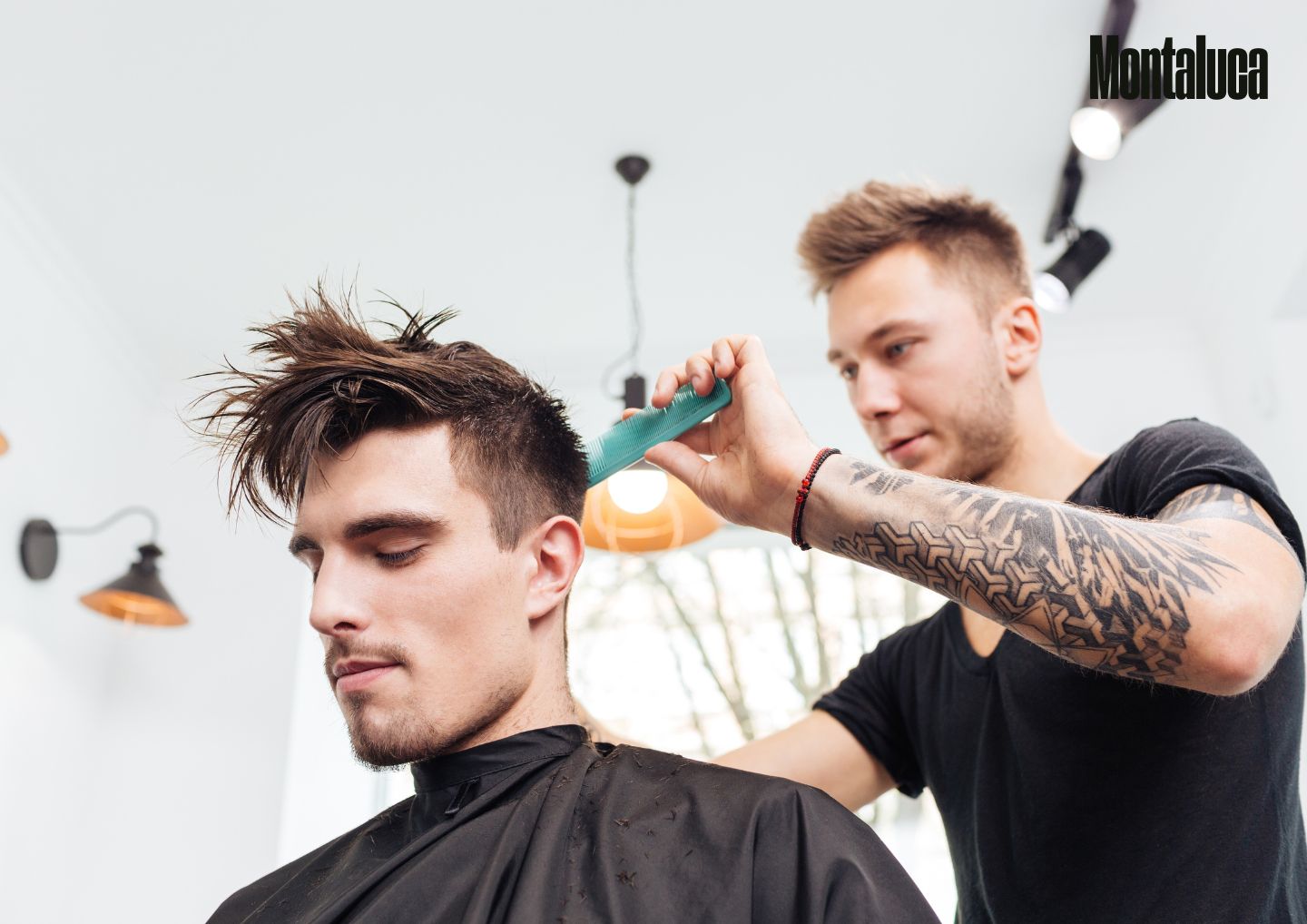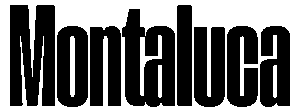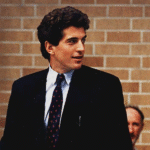Learn how to get the perfect fade haircut – from choosing the right style and asking your barber to maintaining it fresh with easy grooming tips.
The fade has rightfully earned its place as one of the most sought-after men’s haircuts worldwide, and for good reason. This versatile style seamlessly transitions from boardroom presentations to weekend barbecues, making it the ultimate chameleon of men’s grooming. Whether you’re sporting a sharp business look or keeping things casual, a well-executed fade adapts to any occasion with effortless style.
What makes the perfect fade haircut so universally appealing? It’s the clean, graduated transition from longer hair on top to shorter sides that creates a polished yet modern appearance. From Hollywood celebrities to your neighborhood barber’s chair, the fade has become a grooming staple that transcends age, profession, and personal style.
In this comprehensive guide, we’ll walk you through everything you need to know about achieving and maintaining that coveted perfect fade. You’ll learn how to communicate effectively with your barber, discover the maintenance secrets that keep your cut looking fresh, and master the styling techniques that make your fade stand out. By the end of this post, you’ll have all the tools necessary to rock a fade that turns heads and boosts confidence.
Understanding the Fade
What Defines a Fade Haircut?
A fade haircut is characterized by its gradual transition from longer hair at the top of the head to progressively shorter hair down the sides and back. This seamless blending technique creates a “fading” effect that gives the style its name. Unlike traditional haircuts with distinct length differences, fades rely on skillful clipper work to achieve smooth, graduated transitions.
The fade’s popularity stems from its rich history in military grooming standards, where practicality met professionalism. Originally adopted by servicemen for its low-maintenance appeal, the fade gradually evolved into mainstream men’s grooming culture during the 1980s and 1990s. Today, it represents the perfect marriage of classic barbering techniques and contemporary style sensibilities.
Types of Fade Haircuts
Understanding the different types of fade haircuts is crucial for choosing the right style for your face shape and lifestyle. Each variation offers unique benefits and creates distinct visual effects.
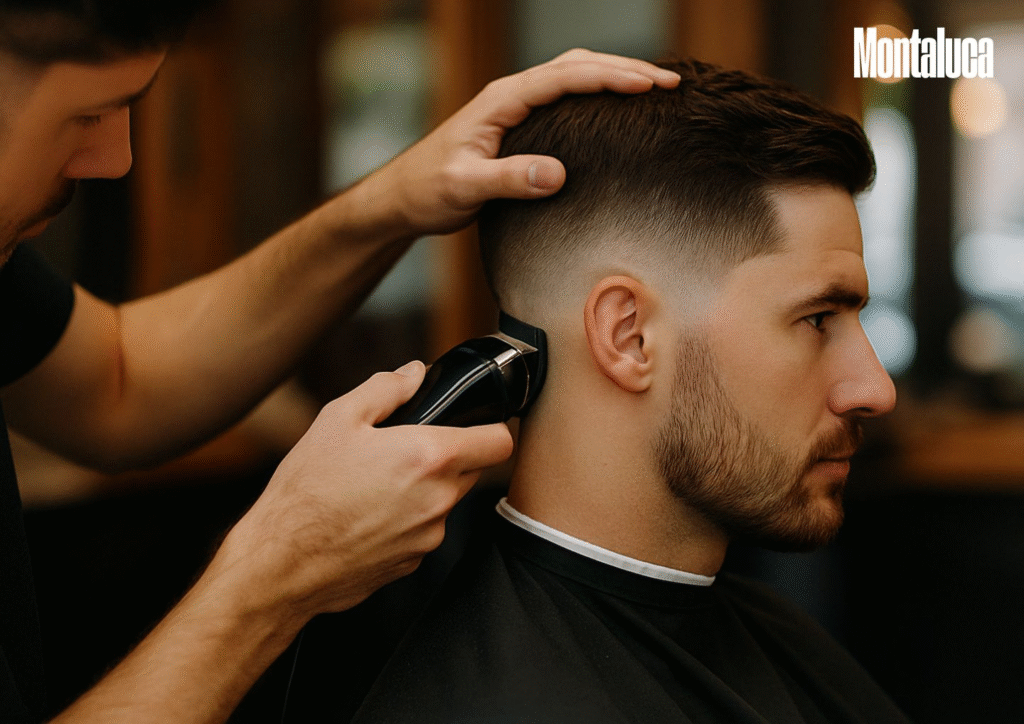
Low Fade: This subtle approach begins the fade just above the ears and neckline. The gradual transition creates a conservative, professional look that works exceptionally well in corporate environments. Low fades are ideal for men who want the benefits of a fade without dramatic contrast.
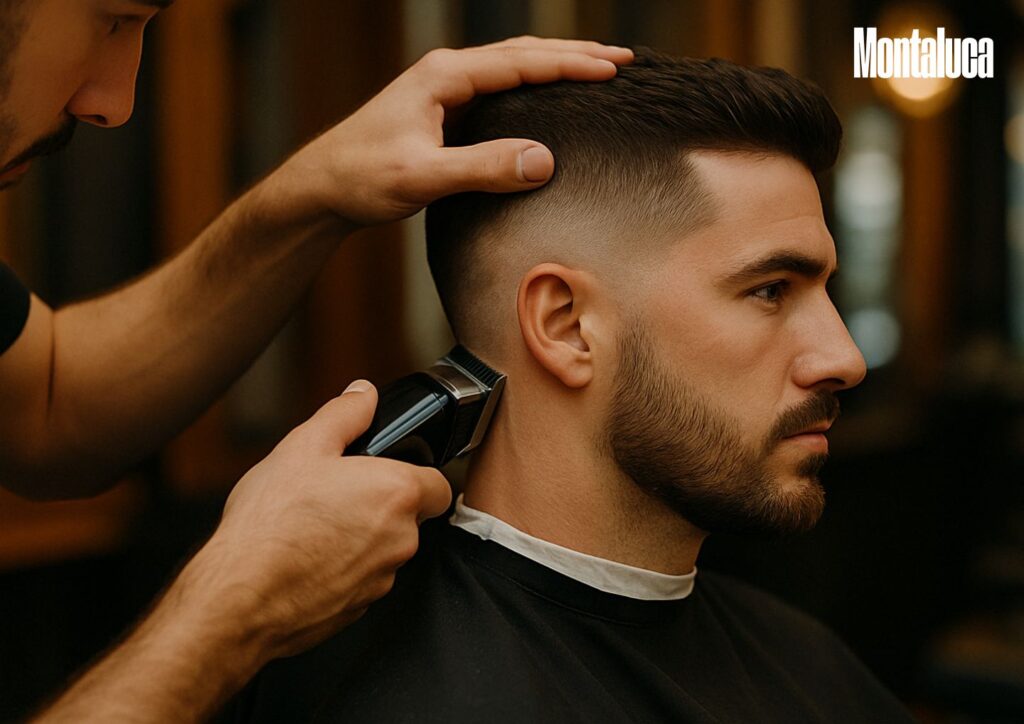
Mid Fade: Starting around the temple area, mid fades offer more noticeable contrast than low fades while maintaining versatility. This middle-ground option provides enough definition to make a statement without appearing too edgy for formal settings.
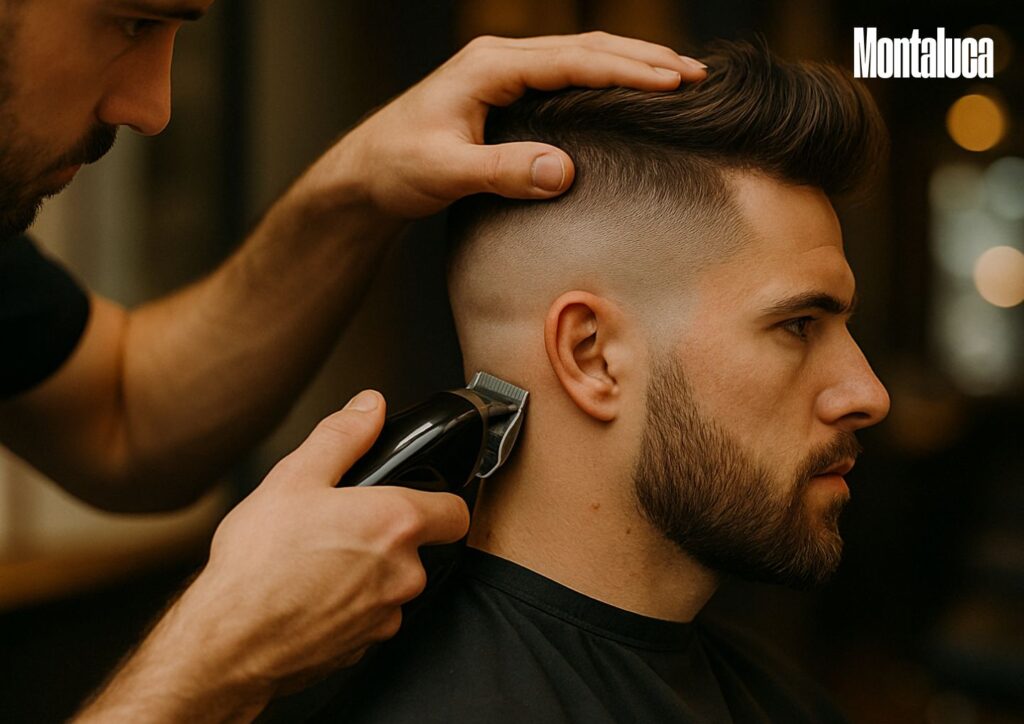
High Fade: Beginning near the top of the sides, high fades create bold, dramatic contrast. This modern approach maximizes the visual impact of the longer hair on top and works particularly well with textured or voluminous styles.
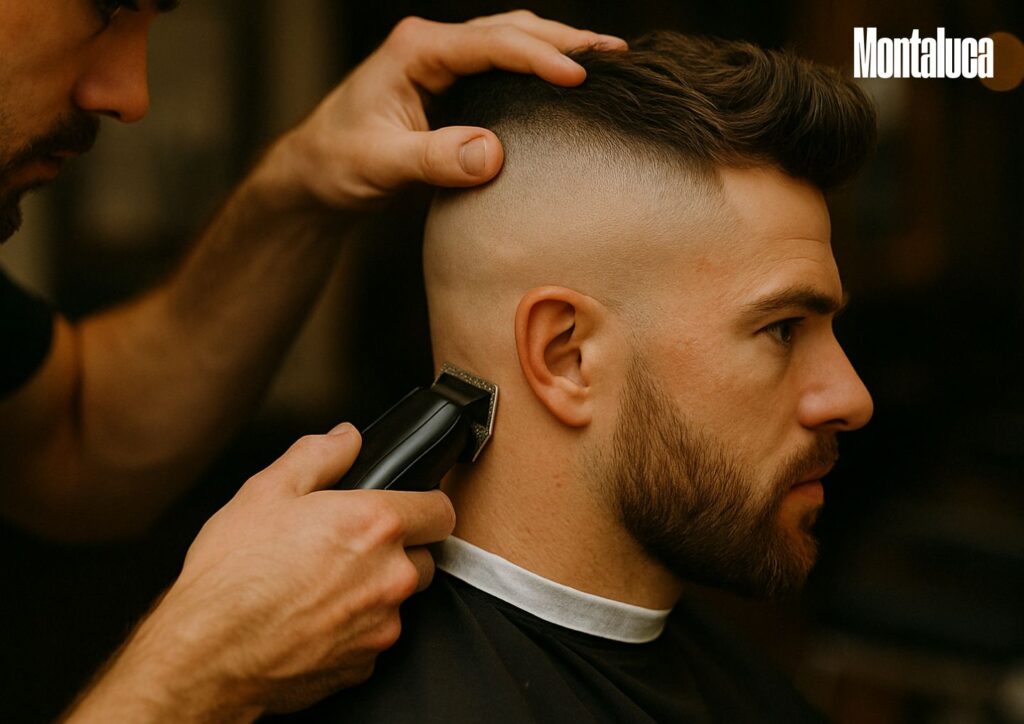
Skin Fade: Also known as a bald fade, this technique takes the hair down to skin level at the shortest point. Skin fades require exceptional precision and create the most dramatic contrast possible, making them perfect for those who want maximum impact.
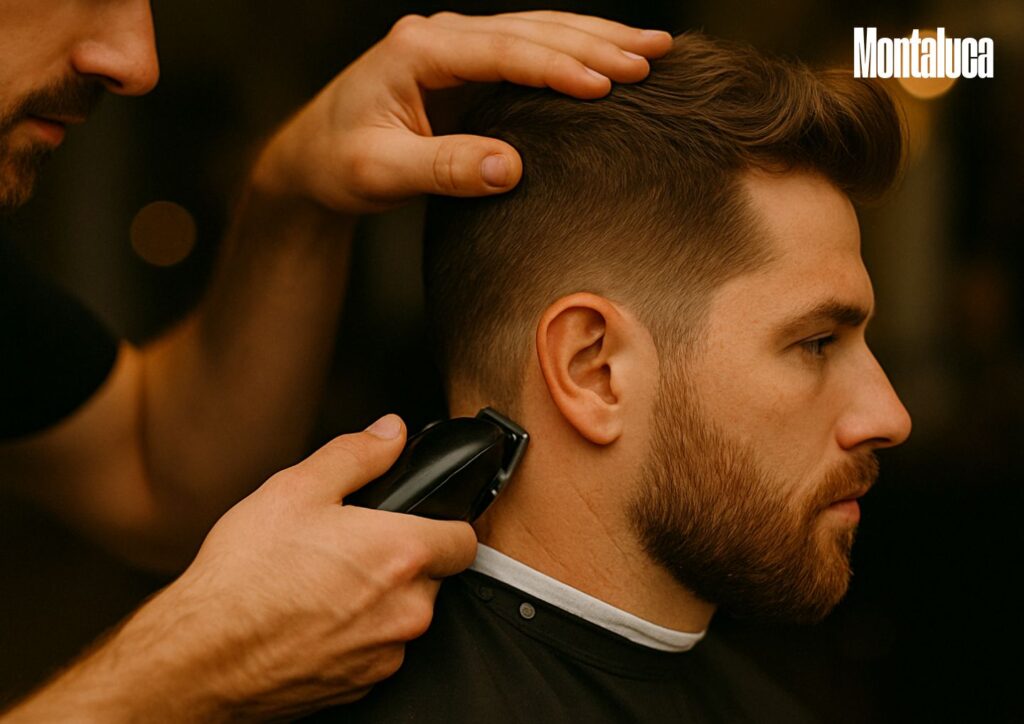
Taper: While technically not a fade, tapers are often confused with fades. Tapers gradually shorten hair without necessarily reaching skin level, creating a more subtle transition that’s perfect for conservative environments.
How to Ask Your Barber for the Perfect Fade
The Power of Visual Communication
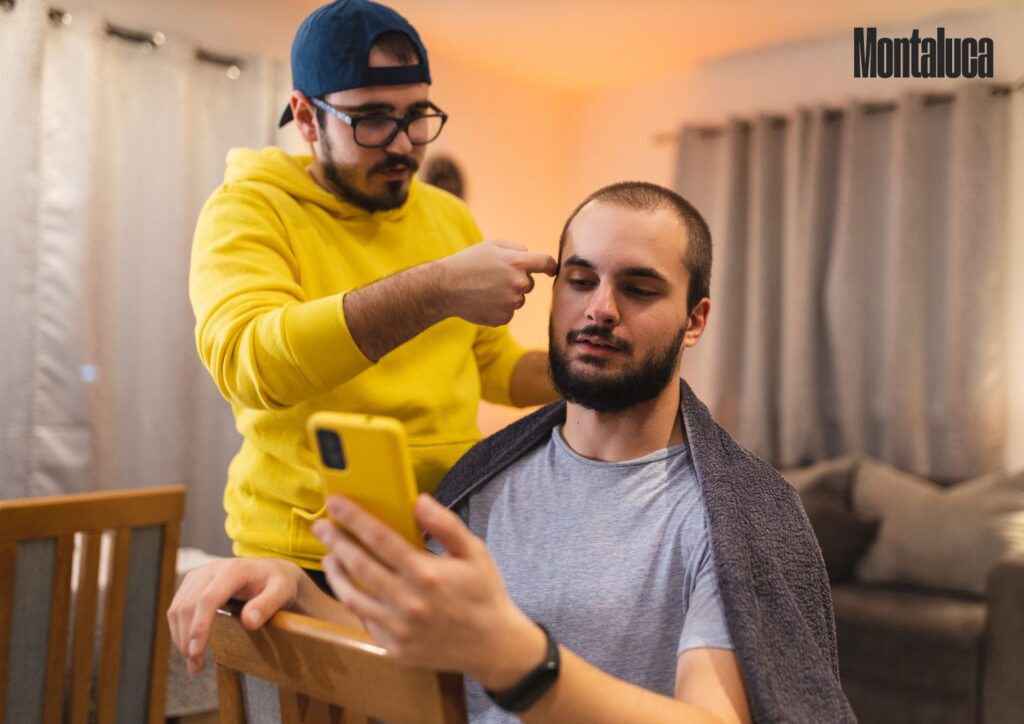
Successfully communicating your desired fade starts long before you sit in the barber’s chair. Preparation is key to achieving the perfect fade haircut you envision. The most effective tool in your arsenal? High-quality reference photos.
Collect multiple images showing your desired fade from different angles – front, sides, and back views provide your barber with comprehensive visual guidance. Screenshots from Instagram, Pinterest, or barber shop websites work perfectly. Don’t rely on celebrity names or vague descriptions; visual references eliminate ambiguity and ensure you and your barber are on the same page.
Mastering Barber Communication
When discussing your fade with your barber, specificity is crucial. Start by clearly stating your preferred fade level using precise terminology. Instead of saying “short on the sides,” specify whether you want a low, mid, or high fade. This immediately establishes the foundation for your cut.
Next, communicate the desired length for the top section. Use clipper guard numbers (like “number 4 on top”) or measurements in inches for clarity. Discuss how you want the fade blended – do you prefer a sharp, defined transition or a more gradual blend? These details help your barber understand your aesthetic preferences.
Essential Questions to Ask Your Barber
Professional barber tips for fades always emphasize the importance of two-way communication. Here are key questions that demonstrate your knowledge and help ensure optimal results:
- “What fade level would work best with my face shape and hair type?”
- “How often will I need touch-ups to maintain this look?”
- “What styling products do you recommend for this specific fade?”
- “Can you show me how to style it at home?”
- “Should we adjust the fade line based on my hairline or head shape?”
These questions not only help you get the perfect cut but also establish a collaborative relationship with your barber, leading to better results over time.
Keeping Your Fade Fresh
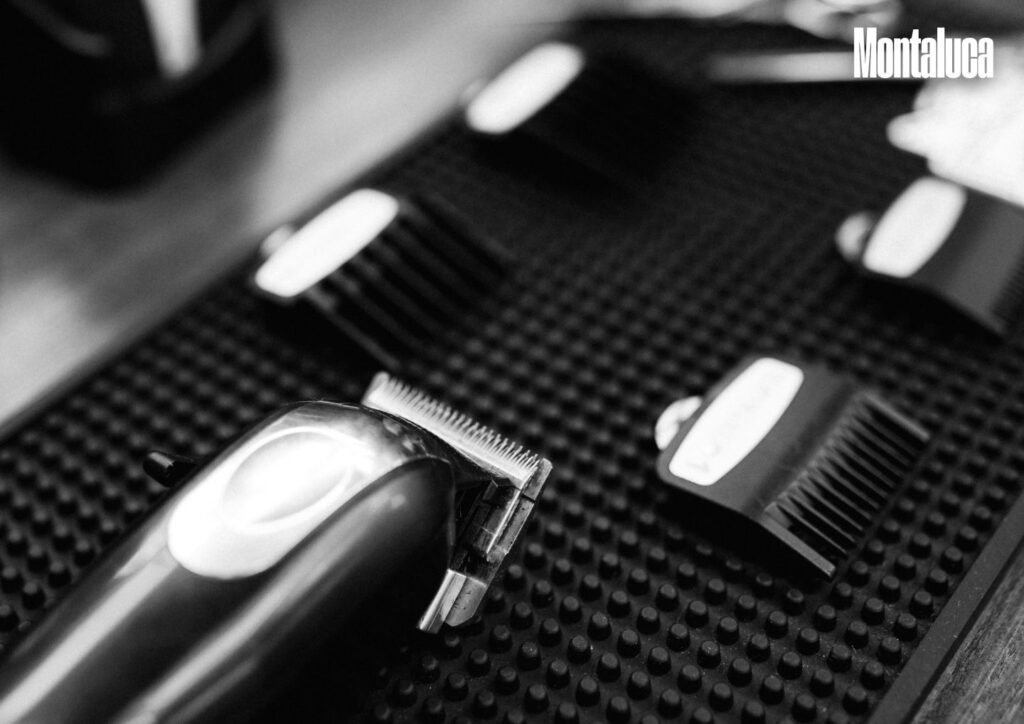
The Science of Fade Maintenance
Understanding how often to get a haircut with a fade is essential for maintaining that sharp, polished appearance. Unlike traditional haircuts that can go 4-6 weeks between trims, fades require more frequent attention due to their precise nature and the way hair grows.
The general rule for fade maintenance is every 2-3 weeks, but this timeline varies based on several factors. Your hair’s growth rate, the type of fade you chose, and your personal standards all influence the maintenance schedule. High and skin fades typically need attention every 2 weeks, while low fades can often stretch to 3 weeks before looking unkempt.
Fast-growing hair or those in professional environments where appearance is crucial may need weekly touch-ups. Conversely, if you prefer a slightly grown-out look or have slower hair growth, you might extend the timeline to 4 weeks for certain fade types.
At-Home Maintenance Techniques
Between barbershop visits, strategic at-home maintenance can extend the life of your fade and keep it looking professional. Investing in quality clippers for minor touch-ups pays dividends in both appearance and cost savings.
Focus on the neckline and areas behind the ears, where hair growth is most noticeable. Use a higher guard number than what your barber used and work conservatively – it’s easier to remove more hair than to fix over-cutting mistakes. Many men find success using a handheld mirror system to check their work from multiple angles.
For those uncomfortable with DIY trimming, dry brushing the fade with a clean clipper (no guard) can help maintain the gradient’s appearance by removing loose hairs without actually cutting. This technique refreshes the fade’s clean lines between professional cuts.
Proper Washing and Care Routines
Your daily hair care routine significantly impacts how long your fade maintains its sharp appearance. Men’s grooming tips consistently emphasize the importance of balanced washing frequency – too much can strip natural oils, while too little leads to buildup that makes hair appear dull and lifeless.
For most men with fades, washing every other day or every two days strikes the perfect balance. Use a sulfate-free shampoo that cleans without over-drying, followed by a lightweight conditioner applied only to the longer hair on top. The shorter faded sections rarely need conditioning.
Pay special attention to scalp health, as the shorter hair in faded areas makes scalp condition more visible. Use a gentle exfoliating scrub once weekly to prevent buildup and maintain healthy hair follicles. A quality scalp moisturizer prevents flaking and keeps the skin beneath your fade looking healthy.
Consider your lifestyle when establishing your washing routine. Active individuals or those in dusty environments may need daily washing, while office workers can often extend the timeline. The key is maintaining cleanliness without over-processing your hair and scalp.
Styling Tips for a Fade
Matching Products to Your Hair Type
The foundation of great fade styling lies in understanding your unique hair characteristics. Straight hair behaves differently from curly or wavy textures, requiring specific product choices and application techniques for optimal results.
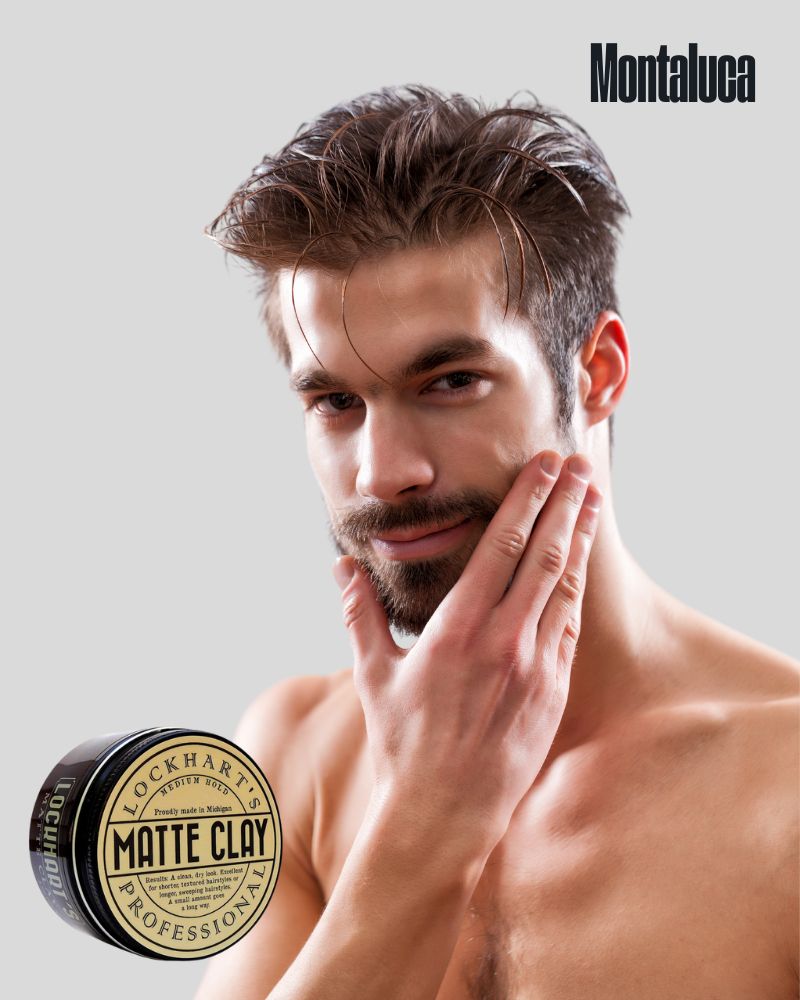
Straight Hair: This hair type benefits from products that add texture and prevent the flat, lifeless appearance that can plague naturally straight styles. Matte clays and texture pastes work excellently, providing hold without shine while creating natural-looking movement. Apply to slightly damp hair and work through with your fingers for the most natural finish.
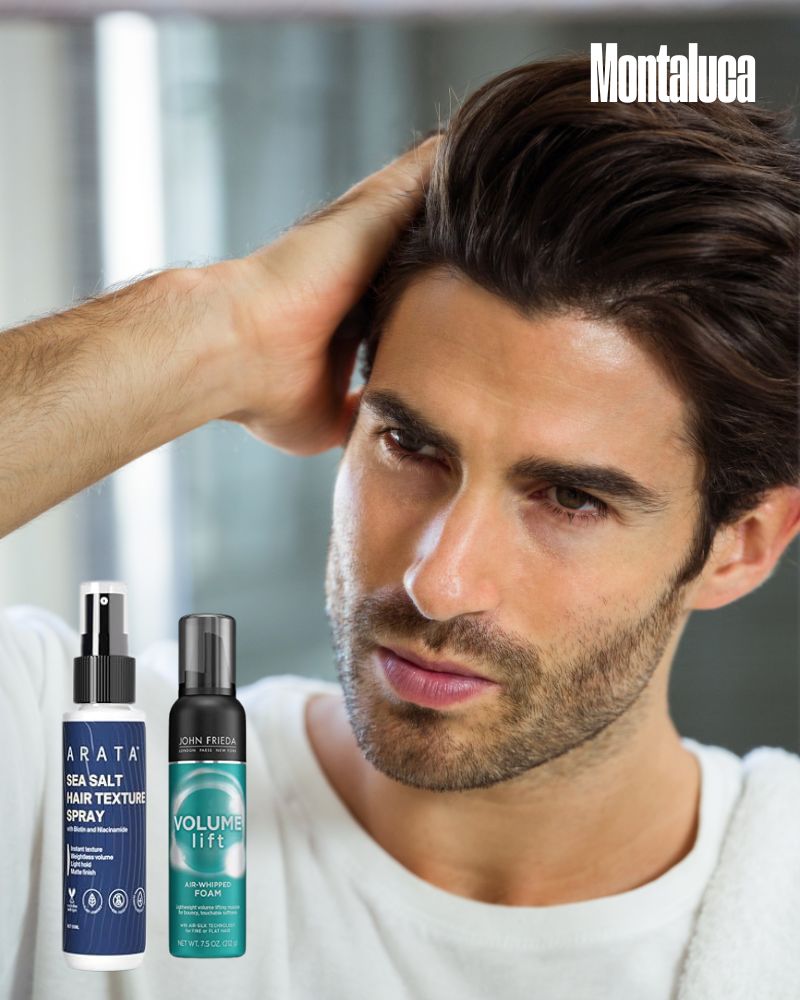
Wavy Hair: Embrace your hair’s natural texture with products that enhance waves without weighing them down. Sea salt sprays and lightweight mousses help define wave patterns while maintaining volume. For more polished looks, a small amount of pomade can tame frizz while preserving wave structure.
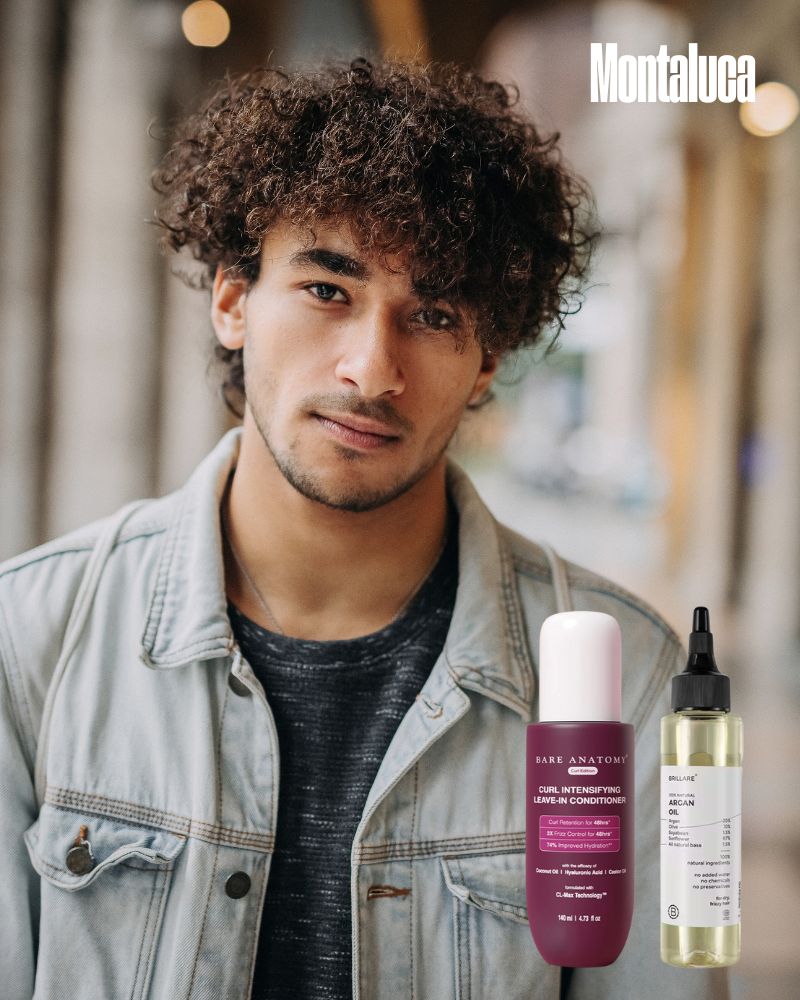
Curly Hair: Focus on moisture and definition with cream-based products that fight frizz and enhance curl patterns. Leave-in conditioners, curl creams, and lightweight oils work together to maintain healthy, defined curls on top while keeping the faded sections neat and clean.
Essential Styling Products for Fades
Building a versatile styling arsenal ensures you can adapt your fade to any occasion. Men’s grooming tips consistently recommend having multiple products to handle different styling needs and hair conditions.

Old Spice Classic Pomade for Men, Medium Hold, Low Shine, Men’s Hair Styling, 2.22 Oz
Pomade: The classic choice for sleek, polished looks. Water-based pomades offer strong hold with high shine, perfect for formal occasions or vintage-inspired styles. Oil-based pomades provide more natural-looking results but can be harder to wash out. Start with a small amount and build up as needed.
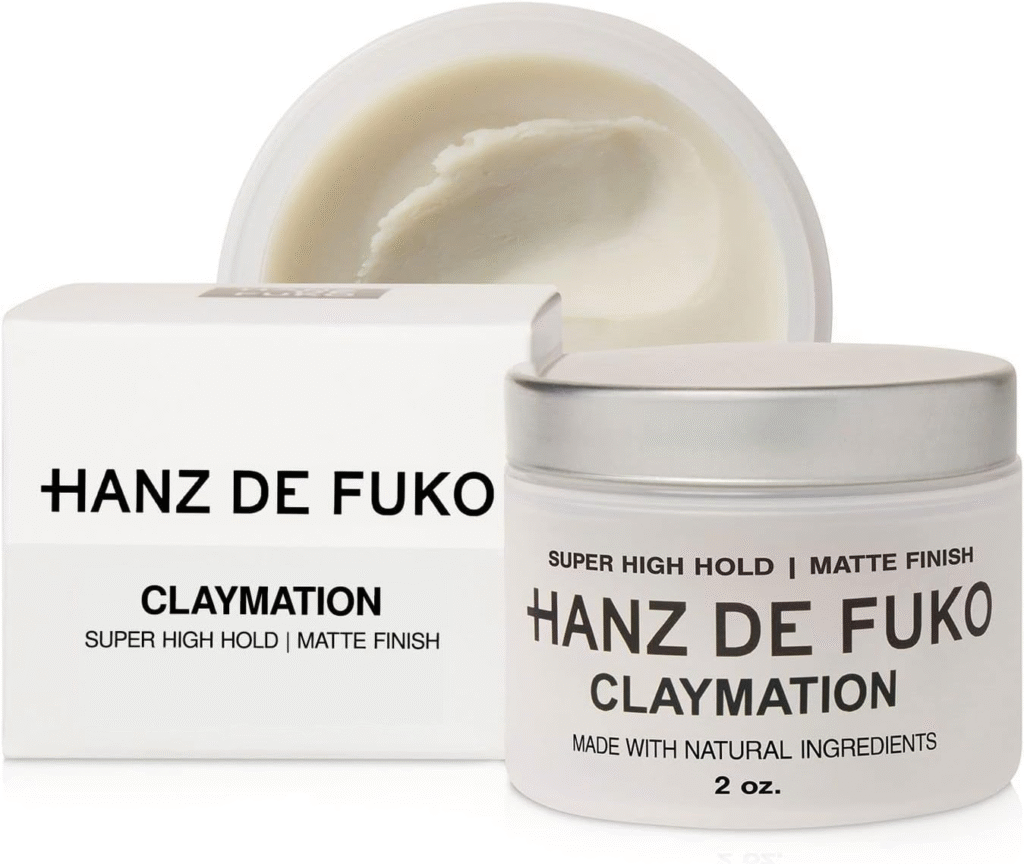
Matte Clay: Ideal for natural, textured styles that don’t appear overly styled. Clay products absorb oil and add volume while providing flexible hold that allows for restyling throughout the day. Work between your palms until warm, then distribute evenly through slightly damp hair.

L3 Level 3 Styling Powder – Natural Look Mens Powder – Easy to Apply with No Oil or Greasy Residue
Texture Spray: Perfect for adding grip and volume to fine hair or creating tousled, casual styles. These products work best on dry hair and can be layered with other styling products for enhanced hold and texture.

American Crew Men’s Fiber Cream, Like Hair Gel with Medium Hold & Natural Shine, 3.3 Fl Oz
Fiber Cream: Offers medium hold with natural finish, making it perfect for everyday styling. Fiber creams work well across all hair types and provide the flexibility to create both casual and more polished looks.
Day-to-Night Styling Transitions
One of the fade’s greatest strengths is its adaptability across different occasions. Learning to transition your style from casual daytime looks to polished evening appearances maximizes your haircut’s versatility.

Casual Day Look: Start with clean, slightly damp hair and apply a small amount of matte clay or texture cream. Use your fingers to create natural-looking texture and movement. This approach works perfectly for weekend activities, casual work environments, or relaxed social situations.

Professional Day Look: For business settings, opt for more structured styling using pomade or fiber cream. Create clean parts with a comb and ensure the longer sections on top are neatly styled. The contrast between the sharp fade and polished top section creates an authoritative, professional appearance.
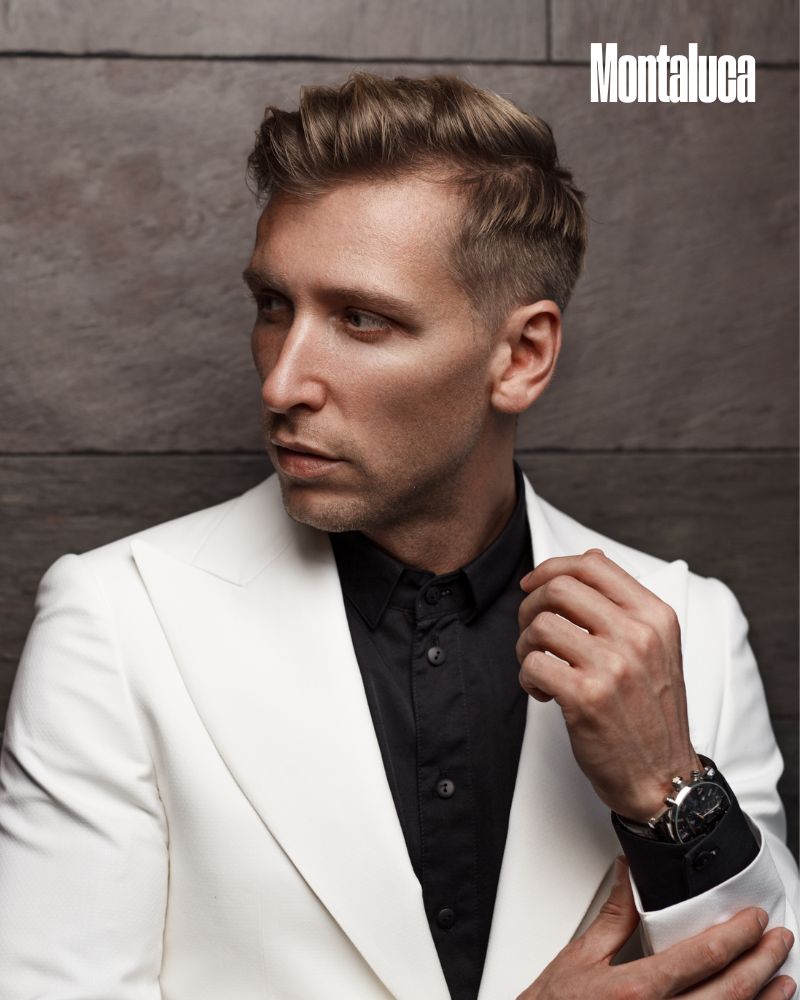
Evening Transition: Transform your daytime style by adding a small amount of pomade over your existing product. Use a comb to create more definition and structure. For special occasions, consider adding subtle texture spray for extra hold that lasts through long evenings.
The key to successful transitions lies in layering products strategically rather than washing and starting over. This approach saves time while allowing you to adapt your style throughout the day as circumstances change.
Mistakes to Avoid
The Perils of Poor Maintenance
Even the most expertly cut fade can quickly lose its appeal without proper maintenance. One of the most common mistakes is allowing uneven growth to compromise the fade’s clean lines. Hair doesn’t grow uniformly across your head, and different areas will require attention at different times.
Neglecting the neckline is particularly problematic, as this area grows quickly and is highly visible. Similarly, the areas around the ears tend to grow faster than the temples, creating an unbalanced appearance if left unaddressed. Regular mirror checks from multiple angles help you identify problem areas before they become obvious to others.
Another frequent maintenance mistake is inconsistent barbershop visits. Stretching too long between appointments not only compromises your appearance but also makes each subsequent cut more expensive and time-consuming, as your barber needs to essentially recreate the entire fade structure.
Product Application Errors
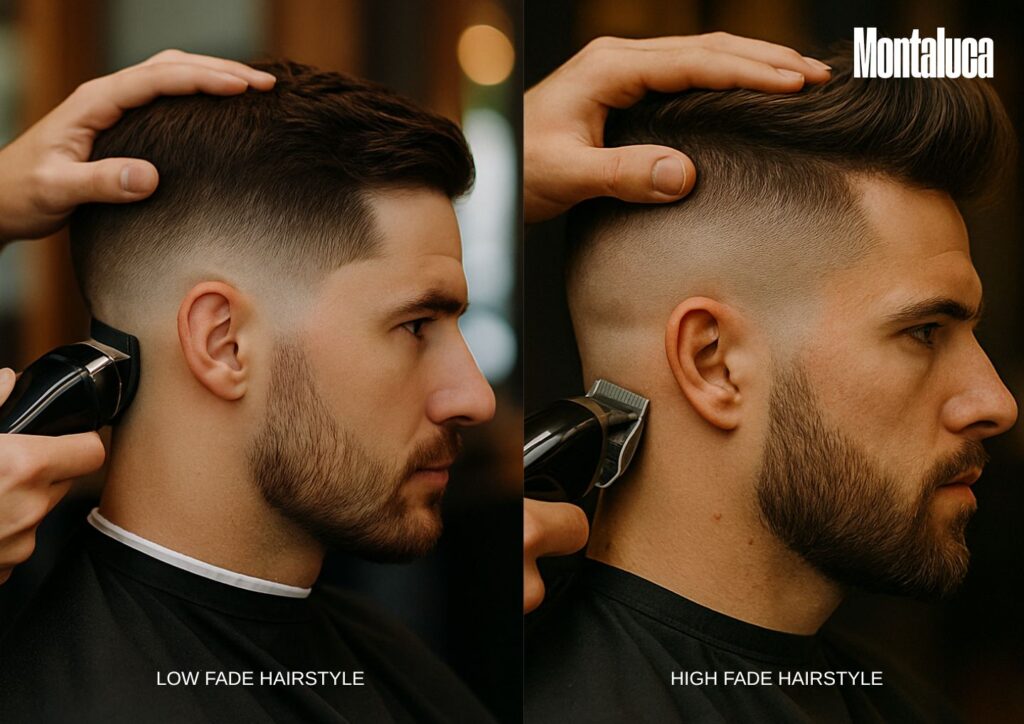
Low fade vs high fade considerations extend beyond the initial cut to daily styling choices. Many men make the mistake of using the same products and techniques regardless of their specific fade type, leading to suboptimal results.
Over-application of styling products is perhaps the most common daily mistake. Fades require less product than longer, uniform-length haircuts because the shorter sections don’t need styling assistance. Start with minimal amounts and build up gradually – you can always add more, but removing excess product often requires rewashing.
Applying heavy products to the entire head, including faded sections, creates unnecessary weight and can make the shorter areas appear greasy or unnatural. Focus styling products primarily on the longer sections while using minimal amounts on the faded areas for light hold and shine control.
Face Shape Miscalculations
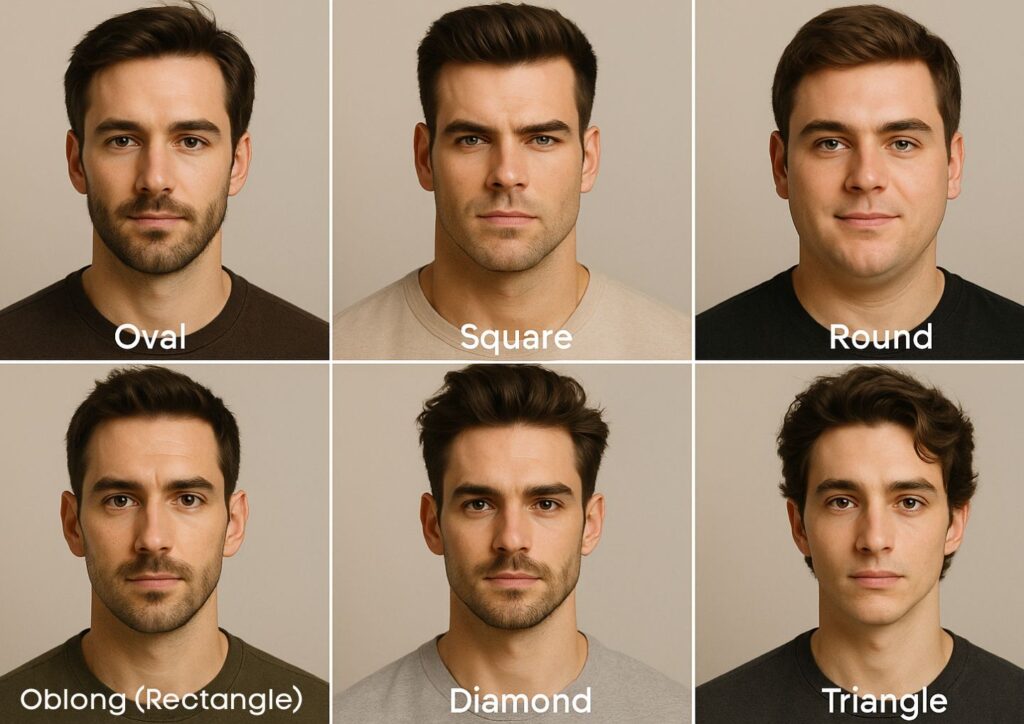
Choosing the wrong fade type for your face shape can undermine even the most skillfully executed cut. Round faces benefit from higher fades that add vertical lines and create the illusion of length. Conversely, long or rectangular faces look better with lower fades that don’t emphasize vertical dimensions.
Square faces can handle most fade types but should avoid extremely high fades that might make the face appear too angular. Oval faces are fortunate in that they can successfully wear virtually any fade variation, making them ideal candidates for experimenting with different styles.
Consider your hairline and natural hair growth patterns when selecting fade types. Receding hairlines often look better with lower fades that don’t draw attention to the hairline, while strong, straight hairlines can handle higher, more dramatic fades that showcase the contrast.
Achieving and maintaining the perfect fade haircut is an art that combines clear communication, consistent maintenance, and proper styling techniques. The journey from barbershop consultation to daily grooming routine requires attention to detail, but the results speak for themselves – a versatile, professional, and undeniably sharp look that adapts to any situation.
Remember that your relationship with your barber is crucial to fade success. Clear communication, regular appointments, and trust in professional expertise create the foundation for consistently excellent results. Between visits, proper at-home maintenance and appropriate product choices keep your fade looking fresh and professional.
The fade’s enduring popularity stems from its unique combination of classic barbering tradition and contemporary style flexibility. Whether you choose a subtle low fade for conservative environments or a dramatic high fade for maximum impact, the key lies in selecting the right variation for your lifestyle, face shape, and personal preferences.
Don’t be afraid to experiment with different fade types and styling approaches as your comfort level grows. The beauty of fades lies in their adaptability – what works for special occasions might differ from your daily styling routine, and that’s perfectly fine.
Save this guide before your next barbershop visit and reference it when discussing options with your barber. With the right knowledge, consistent maintenance, and proper styling techniques, your perfect fade haircut will become a signature element of your personal style that boosts confidence and makes lasting impressions.
Ready to elevate your grooming game? Share your fade transformation stories in the comments below and help fellow readers on their journey to the perfect cut.

